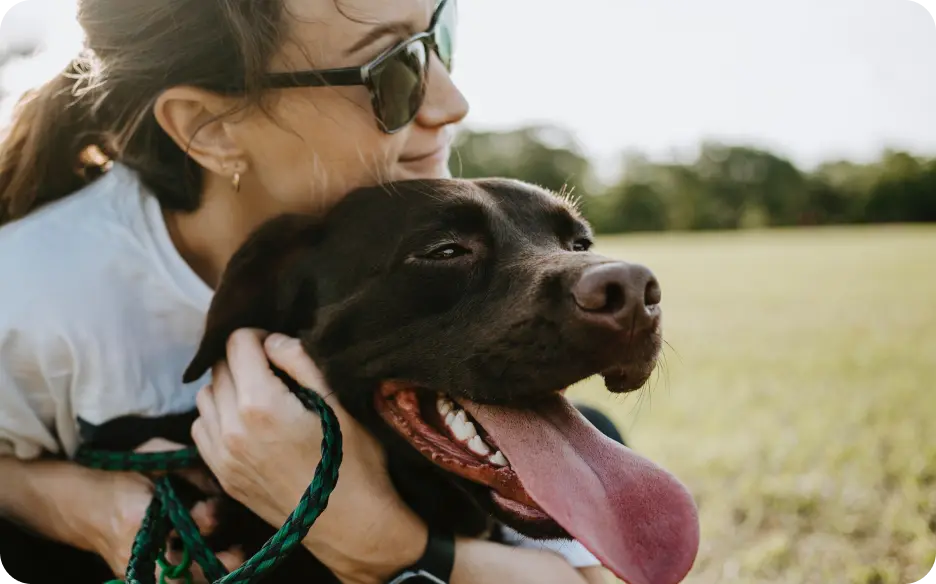Why Is My Female Dog Whining And Carrying A Toy?
Post Date:
December 10, 2024
(Date Last Modified: December 10, 2024)
Seeing your female dog whining and carrying a toy can be concerning. This behavior often stems from various emotions and understanding its roots is key to ensuring her happiness.
Whining as a Form of Communication
Whining is a common vocalization in dogs, used to express excitement, anxiety, or discomfort. When a dog carries a toy while whining, the meaning can vary based on her body language and the situation.
Excitement and Playfulness
A frequent reason for this behavior is excitement. Dogs thrive on play, and if your dog has recently engaged in activities with you, she may carry her toy around in anticipation of more fun. This behavior often arises when she senses your attention shifting towards play.
Anxiety and Stress
Anxiety may also play a role, especially if your dog finds herself in new or unsettling environments. Carrying a beloved toy can offer comfort, much like a child clinging to a favorite stuffed animal. Whining in this context serves as a signal of her discomfort or need for reassurance. Monitoring her surroundings for potential stressors can help address this issue.
Hormonal Changes
During her heat cycle, a female dog may exhibit increased vocalization and behavioral changes. If her whining and toy-carrying coincide with this period, it might be a natural response to hormonal fluctuations. Keeping track of her cycles can help clarify whether this behavior is linked to her physical state.
Seeking Attention
Dogs are keenly aware of their owners’ moods and activities. If your female dog is whining and carrying a toy, she might be trying to capture your attention and engage in play. This behavior often emerges when she feels overlooked. Participating in playtime can strengthen your bond and reduce her need to vocalize for attention.
Possessiveness and Protection
Whining can also stem from possessive behavior. If your dog feels the need to guard her toy or is trying to initiate play with another dog or person, she may vocalize to assert her claim. Observing her interactions with other pets or people is essential to ensure positive experiences and prevent conflict.
Boredom and Lack of Stimulation
A lack of mental or physical stimulation can lead to boredom, prompting dogs to vocalize their frustration. If your female dog is whining and carrying a toy, she may require more engagement in her daily routine. Incorporating walks, training exercises, or interactive toys can help alleviate this issue.
Health Considerations
Excessive whining and unusual toy-carrying behaviors could indicate underlying health problems. If these behaviors persist, consulting a veterinarian is advisable. Pain or discomfort may manifest through changes in behavior, and a thorough check-up can rule out potential health issues.
Responding to Whining and Toy-Carrying
Understanding your female dog’s behavior requires observation and empathy. Pay attention to her body language and the context in which these behaviors occur. If anxiety is a factor, creating a cozy and secure environment can help her feel more at ease. Offering consistent play opportunities can satisfy her need for interaction. Engaging in activities such as fetching or tug-of-war can enhance your connection and provide her with the mental stimulation she craves. In cases of possessiveness, employing positive reinforcement techniques can teach her to share. Encouraging her to drop the toy on command and rewarding her can foster a more positive interaction with other pets or people. Addressing boredom is equally important; varying her routine with new toys, puzzles, and socialization with other dogs can help keep her engaged.
If health concerns arise, seeking a veterinary assessment is crucial for addressing any medical needs. Early detection of issues can lead to more effective treatment and ensure a better quality of life for your pet.
Fostering a Positive Environment
Recognizing that dogs communicate through vocalizations and actions allows for a deeper understanding of their needs. By observing her behavior and responding with care, you can create a supportive atmosphere that caters to her emotional and physical well-being. A dog-owner relationship built on trust and understanding enriches both lives, nurturing a loving bond that benefits everyone involved.






